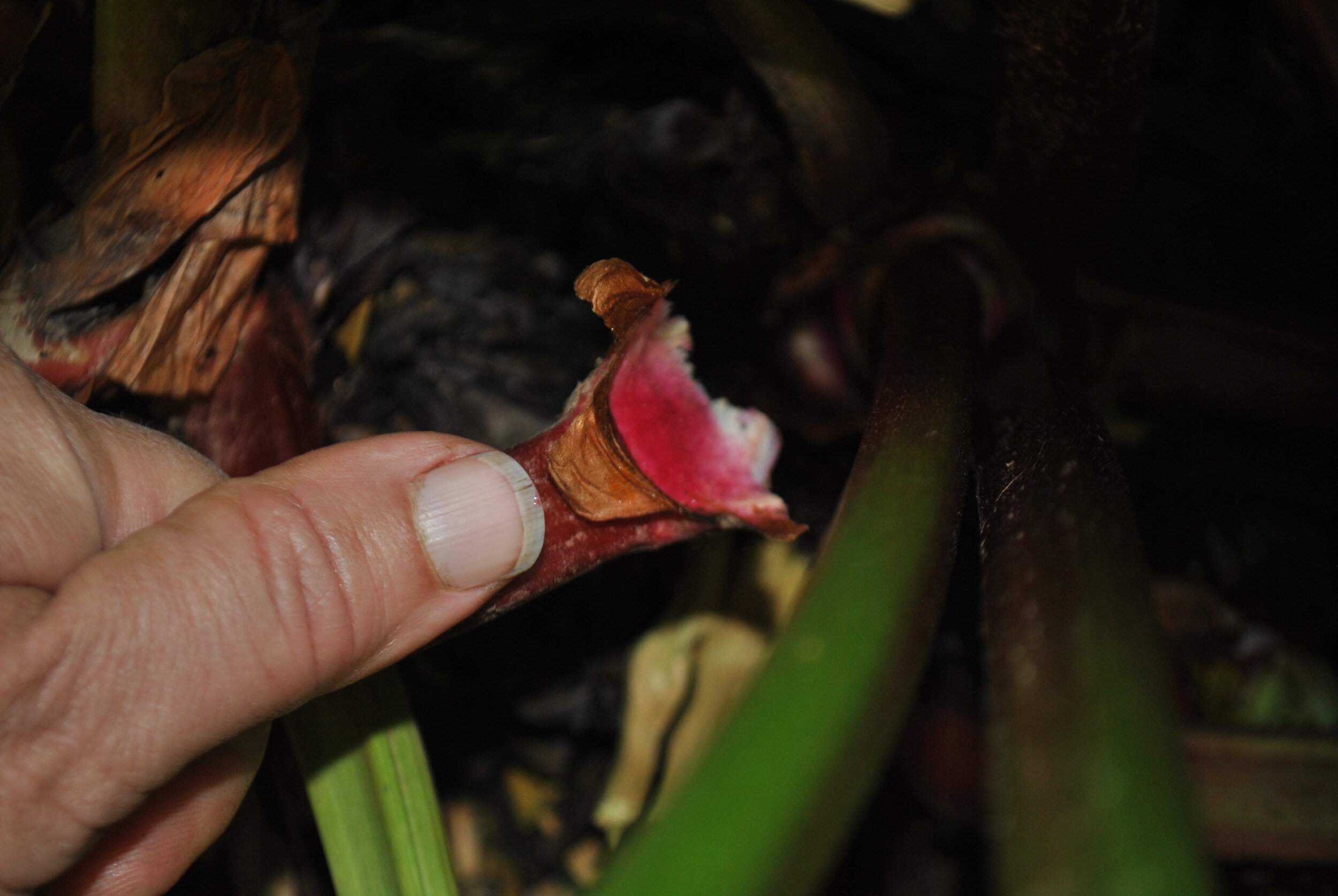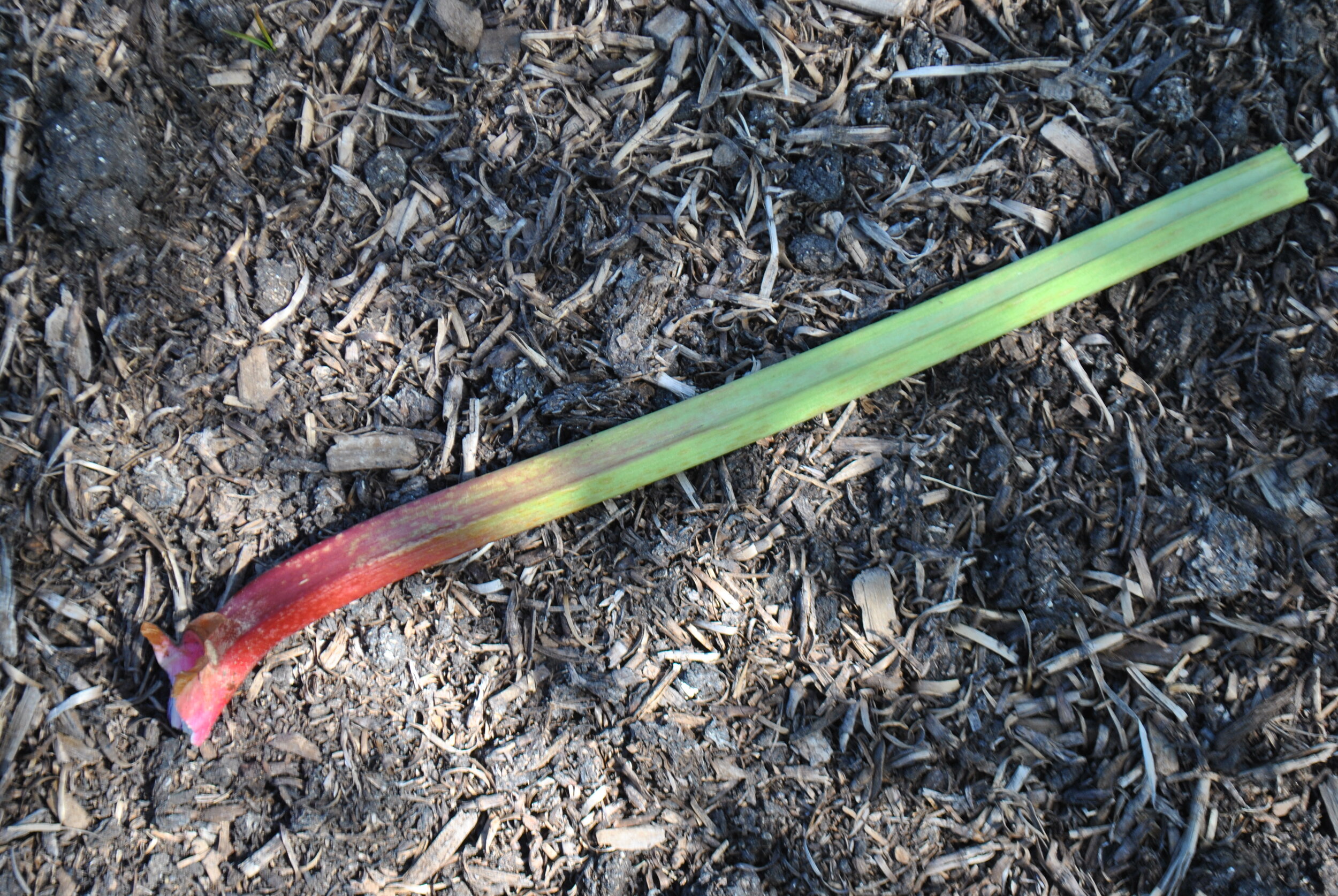Rhubarb, rhubarb, rhubarb
From the garden
Annie Reeve, Woodend Permaculture Garden


Delicious rhubarb, low demand - inspired output. Rhubarb is an herbaceous perennial consisting of a large rhizome which is a storage organ for carbohydrates over Winter to provide nutrition for the new leaves in early Spring. Over time the rhizomes increase in number and several leafing crowns will appear and should be planted in an open, sunny position in well-drained, deeply enriched soil. It will require watering well in dry spells and will benefit from an annual mulch each spring with compost. Rhubarb may need to be divided every 4-5 years.
Rhubarb is a vegetable often eaten sweet, it is very versatile though and makes a fabulous chutney. When harvesting the rhubarb stems, the edible part, it is recommended to run your hand down the stem to the base and firmly pull the stem away; this removes plant material that may be liable to rot and damage the crown if left.
Rhubarb is one of many vegetables that contain oxalic acid, this toxin is concentrated in the green leafy part of the plant, for this reason it is vital to cut the stem at the base of the leaf and only eat the stem.
Rhubarb may be blanched under a cloche prior to harvesting this will provide a more tender but less flavoursome vegetable.
To the table
Lucy Campbell, Veg Action
Medicinal rhubarb was popular in China thousands of years ago but it wasn’t until the 14th century that the variety we know travelled the Silk Road and eventually appeared in Europe. The English started using it in their recipes in the 1700s and later introduced it to America.
‘Forced rhubarb’, famous for its colour and flavour, is grown in the heavy soil and cold frosty climate of Leeds, Wakefield and Bradford, known as the Rhubarb Triangle. This area best replicates the conditions of rhubarb’s original home in Siberia. The plants are grown in darkened, warm sheds and the lack of light gives them slender pink stems. To ensure darkness, it is harvested by candlelight.
Rhubarb is a good source of vitamin C (needed for the growth and repair of tissues in the body) and K (important for helping your blood to clot) and contains some vitamin A (important for growth and development and the maintenance of your immune system).
It also contains minerals such as potassium (which helps to regulate blood pressure), manganese (involved in the regulation of brain and nerve function) and magnesium (involved in the regulation of muscle, heart and nerve function and keeping bones strong).
Rhubarb contains dietary fibre, which is important for a healthy bowel.
Stalks of rhubarb can be baked in tarts and crumbles, tossed into salads or made into chutneys and relishes.
Some ideas:
Make a tangy chutney – cook chopped rhubarb with chopped onion, raisins, brown sugar, cider vinegar and chopped ginger until soft
Add colour to a salad – toss chopped rhubarb with a little sugar and roast until soft (5 to 10 minutes), then add to mixed salad greens and sliced red onion, top with goat’s cheese or a nut-based feta and walnuts and drizzle with a balsamic vinegar vinaigrette
Make a simple dessert – drizzle honey/maple/agave over chopped rhubarb and roast, then spread nut cheese over fruit bread (or brioche) and top with the baked rhubarb, the pan juices and a little honey before serving.
Other plants to harvest in October
New season spring onions, chard, lettuce, spinach, broad beans and peas. (Perennial crops) asparagus, artichokes, rhubarb, mint, tarragon, thyme, regano, lovage, salad burnet and parsley. (Flowers) pinks, roses, marigolds, violets.
